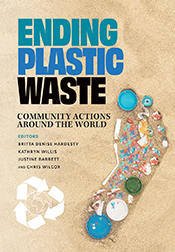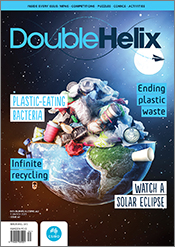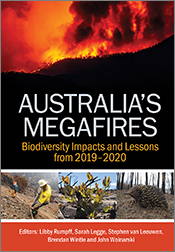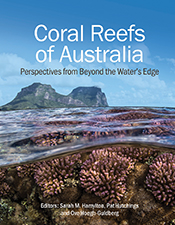Resetting the Compass
Australia's Journey Towards Sustainability
Updated Edition By: David D Yencken, Debra D WilkinsonAustralia's Journey Towards Sustainability
Resetting the Compass: Australia's Journey Towards Sustainability Updated Edition sets out Australia's environmental problems in their global context and explains what is now needed to fix them. It also illustrates how ecological sustainability can be achieved together with economic, social and cultural sustainability. + Full description
The book examines the pressures on our environment from population growth, consumption patterns and technological change. The specific actions needed to deal with each of the problems identified are described in detail.
This Edition includes:
- Assessments from the Intergovernmental Panel on Climate Change.
- Figures related to Australia's emissions from the National Greenhouse Gas Inventory.
- Assessments of conditions and trends from the National Land and Water Audit.
- Estimates of the volume of vegetation clearing and new information on wind farms.
This book is essential reading for politicians and public servants; business leaders and managers; environmentalists; academics and students in environmental courses; and all those interested in environmental issues.
- Short descriptionNews
No longer available in a print edition.
Reviews
"An excellent piece of scholarship, filling a major gap in Australia's environmental debate. . . a desperately needed guide to achieving ecological sustainability in Australia."
Tim Flannery, Author
"Everybody should read this book. It is a major contribution to understanding the deterioration of the earth's life support systems and the urgent need to adopt policies and practices which will lead to a sustainable future in ecological, economic, social and cultural terms."
Ralph Slatyer, Australia's first Chief Scientist
"This book both helps us to understand the underlying issues and provides a substantial reference work. I will certainly be glad to have easy access to it on the shelves of my study."
Peter Doherty, Nobel Laureate
"Immensely important: it discusses and suggests answers to questions vital to all life on Earth; vital also to the kind of world the children of today will inherit from us."
Sir Ninian Stephen, former Governor-General and Australia's First Ambassador for the Environment
"This is a book about Australia's environmental conditions and the action needed to understand and manage them. . .I like this book for several reasons: It has a clear sequence of chapter, taking a sustained, and consistent theme towards a logical conclusion recommending government and public action. . .The book is full of ideas which are useful in bringing the context of physical (and human) geography up to date. . .The credibility of the writing, apparent in the text, is reinforced by the end notes indicating sources and demonstrating the authenticity and authority of the writing. This is a book to be read and used by geography teachers to reinforce their critical role as educators – leaders in taking the next generation into Australia's journey towards sustainability. It is highly recommended."
Geoff Conolly (Geography Bulletin, Winter, 2000)
“There is so much of interest in this book it is difficult to select sections for a review, suffice to say, buy the book, it is hard to put it down. … What appeals most about this book is the holistic approach it takes, highlighting all the components involved and the current state of scientific knowledge both in Australia and globally.”
Australian Landcare, December 2000
“The language of this substantial text is easily accessible enough for first-year students, and its breadth and depth of coverage … will ensure it becomes a reference work retained on the shelf long after specific courses have been completed. A well-structured and indexed title with useful end notes."
The Australian, 3 May 2000
“This is a timely and important book which should be at least on your bookshelf, if not on your desk or even your shoulder-holster! ... The span of the book is truly impressive, and the language is always clear and compelling.”
Ian Lowe, Griffith University, Brisbane (Australian Journal of Environmental Management v.8 no.3 September 2001)
“This is a practical book and it ought to be on the reading list of every planning course in Australia.”
Nicholas Low, Faculty of Architecture, Building and Planning, University of Melbourne (Urban Policy and Research v.19 no.4 December 2001)
Details
ePDF | November 2001ISBN: 9780643091733
Publisher: CSIRO Publishing
Available from eRetailers
Contents
IntroductionThe Context
Chapter 1: The Issues
Damage to the land
State of the Environment reporting
The approach in this book
The four pillars of sustainability
Ways of knowing about the environment: Scientific, local and community knowledge
Chapter 2: The physical and global context
The evolution of life
The principles of conservation and the laws of thermodynamics
The industrial revolution: Exploiting new sources of energy and materials
The limits to growth: The right argument for the wrong reason?
Disturbances to the system
Global environmental trends
Conclusion
Pressures on the Environment in Australia
Chapter 3: Population, consumption and technological change
Pressures from population increase
Consumption
Organisation
Technology
Reducing the pressures
Chapter 4: Energy
Energy and society
Energy issues
Energy reserves in Australia
The environmental impacts of different energy uses
Implications
What should we do?
Conclusion
Chapter 5: Material flows and wastes
Flows of damaging substances
Total material flows
Accumulations in the anthroposphere
Models for assessing energy, material and waste flows
What should we do?
Conclusion
The Condition of the Environment and What we Need to Do About It
Chapter 6: The sustainability of settlements
A conceptual framework for assessing urban sustainability
Stocks
Flows: Resource inputs
Outward flows – wastes and emissions
Impacts on areas outside the boundaries of human settlements
Major influences on sustainability
What should we do?
What matters most
Chapter 7: Atmosphere
Global impacts
Air pollution in regional airsheds
Indoor air pollution
What should we do?
What matters most
Chapter 8: Biodiversity
The condition of biological diversity
Why is biological diversity being lost?
The implications
What should we do?
What matters most
Chapter 9: Land and waters
Ecological integrity of our lands
Ecological integrity of Australia's inland waters
The implications
What should we do?
What matters most
Chapter 10: Estuaries and the sea
Australia's marine and estuarine environments
The implications
What should we do?
What matters most
The Journey Towards Sustainability
Chapter 11: Present policies and future targets
International action
National action
Why current policies will not achieve ecological sustainability
Evaluating past efforts and building on success
Recasting the strategy direction of environmental policy
Setting environmental targets for Australia
Developing specific targets for Australia
Chapter 12: Political and economic change
The relationships between ecological and economic, social and cultural sustainability
From problem to opportunity
A new politics of the environment
A sustainable economy
Chapter 13: The four pillars of wisdom
Social sustainability
Cultural sustainability
Concluding comments
Endnotes
Index








